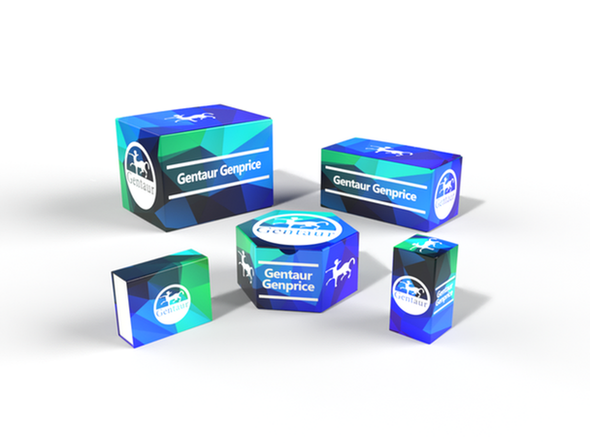740
Mouse Tumor necrosis factor receptor superfamily member 17 (TNFRSF17) ELISA Kit | AE14009MO
- SKU:
- 740-AE14009MO
- Availability:
- Usually ships in 5 working days
Description
Mouse Tumor necrosis factor receptor superfamily member 17 (TNFRSF17) ELISA Kit | AE14009MO | Gentaur UK, US & Europe Distribution
Species Reactivity: Mouse (Mus musculus)
Abbreviation: TNFRSF17
Alternative Name: BCM; BCMA; CD269; B cell maturation antigen|B-cell maturation factor
Application: ELISA
Range: Request Information
Sensitivity: Request Information
Intra-Assay: ≤3.8%
Inter-Assay: ≤7.7%
Recovery: 0, 88
Sample Type: Serum, Plasma, Other biological fluids
Detection Method: Sandwich
Analysis Method : Quantitive
Test Principale: This assay employs a two-site sandwich ELISA to quantitate TNFRSF17 in samples. An antibody specific for TNFRSF17 has been pre-coated onto a microplate. Standards and samples are pipetted into the wells and anyTNFRSF17 present is bound by the immobilized antibody. After removing any unbound substances, a biotin-conjugated antibody specific for TNFRSF17 is added to the wells. After washing, Streptavidin conjugated Horseradish Peroxidase (HRP) is added to the wells. Following a wash to remove any unbound avidin-enzyme reagent, a substrate solution is added to the wells and color develops in proportion to the amount of TNFRSF17 bound in the initial step. The color development is stopped and the intensity of the color is measured.
Product Overview: Tumor necrosis factor receptor superfamily member 17 is a member of the TNF-receptor superfamily. This receptor is preferentially expressed in mature B lymphocytes, and may be important for B cell development and autoimmune response. This receptor has been shown to specifically bind to the tumor necrosis factor (ligand) superfamily, member 13b, and to lead to NF-kappaB and MAPK8/JNK activation. This receptor also binds to various TRAF family members, and thus may transduce signals for cell survival and proliferation.The patient from whose tumor cells the 4;16 translocation was derived had a chronic intestinal malabsorption syndrome. Histologic and immunohistochemical studies demonstrated a lymphoproliferative syndrome of mature T cells.
Stability: The stability of ELISA kit is determined by the loss rate of activity. The loss rate of this kit is less than 5% within the expiration date under appropriate storage condition. The loss rate was determined by accelerated thermal degradation test. Keep the kit at 37°C for 4 and 7 days, and compare O.D.values of the kit kept at 37°C with that of at recommended temperature. (referring from China Biological Products Standard, which was calculated by the Arrhenius equation. For ELISA kit, 4 days storage at 37°C can be considered as 6 months at 2 - 8°C, which means 7 days at 37°C equaling 12 months at 2 - 8°C) .






